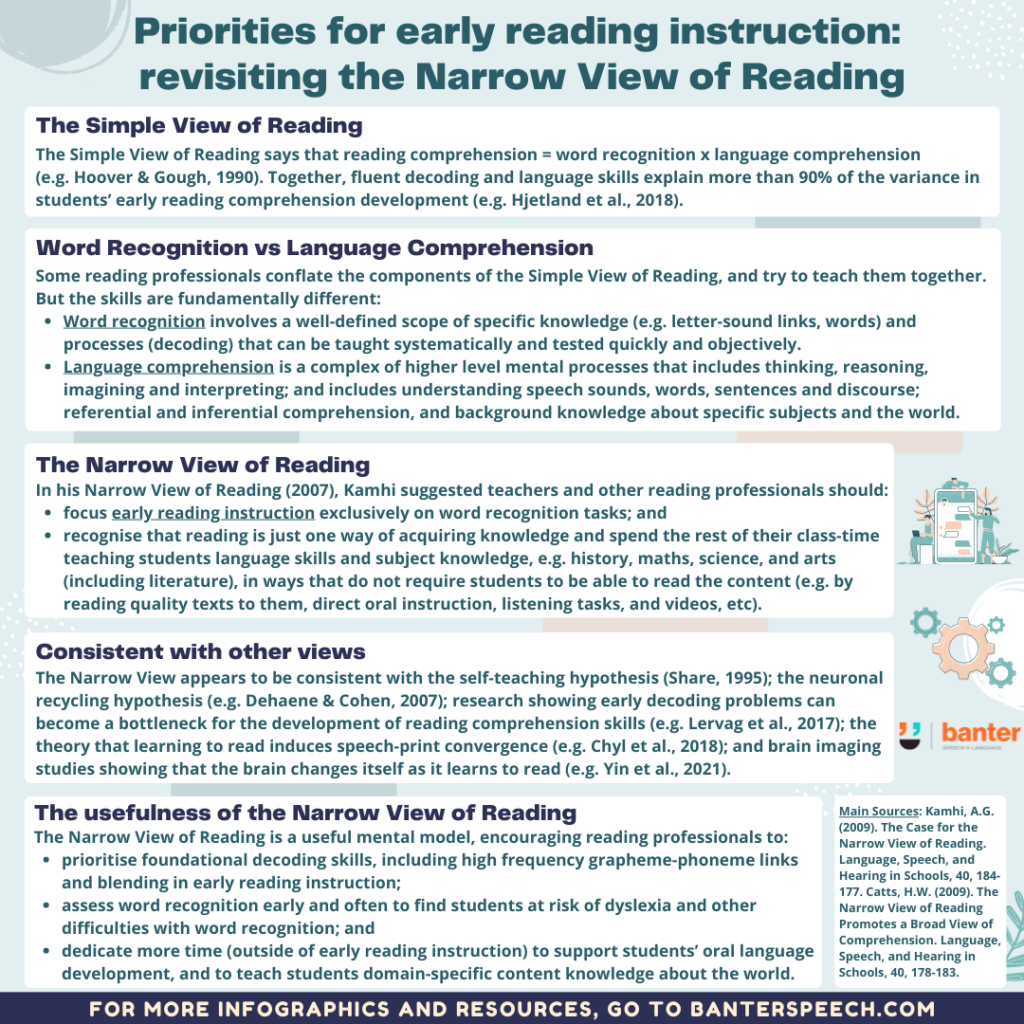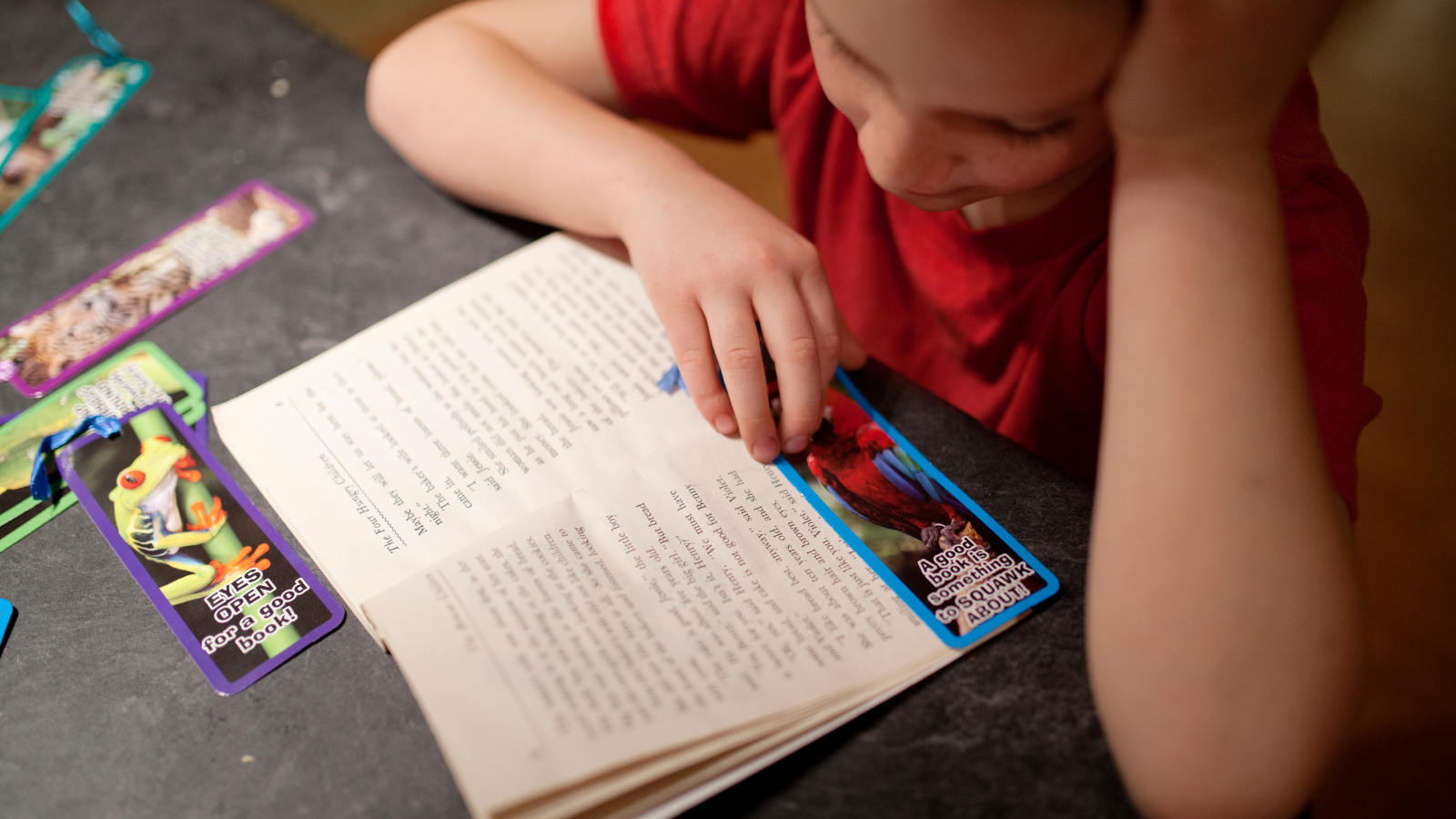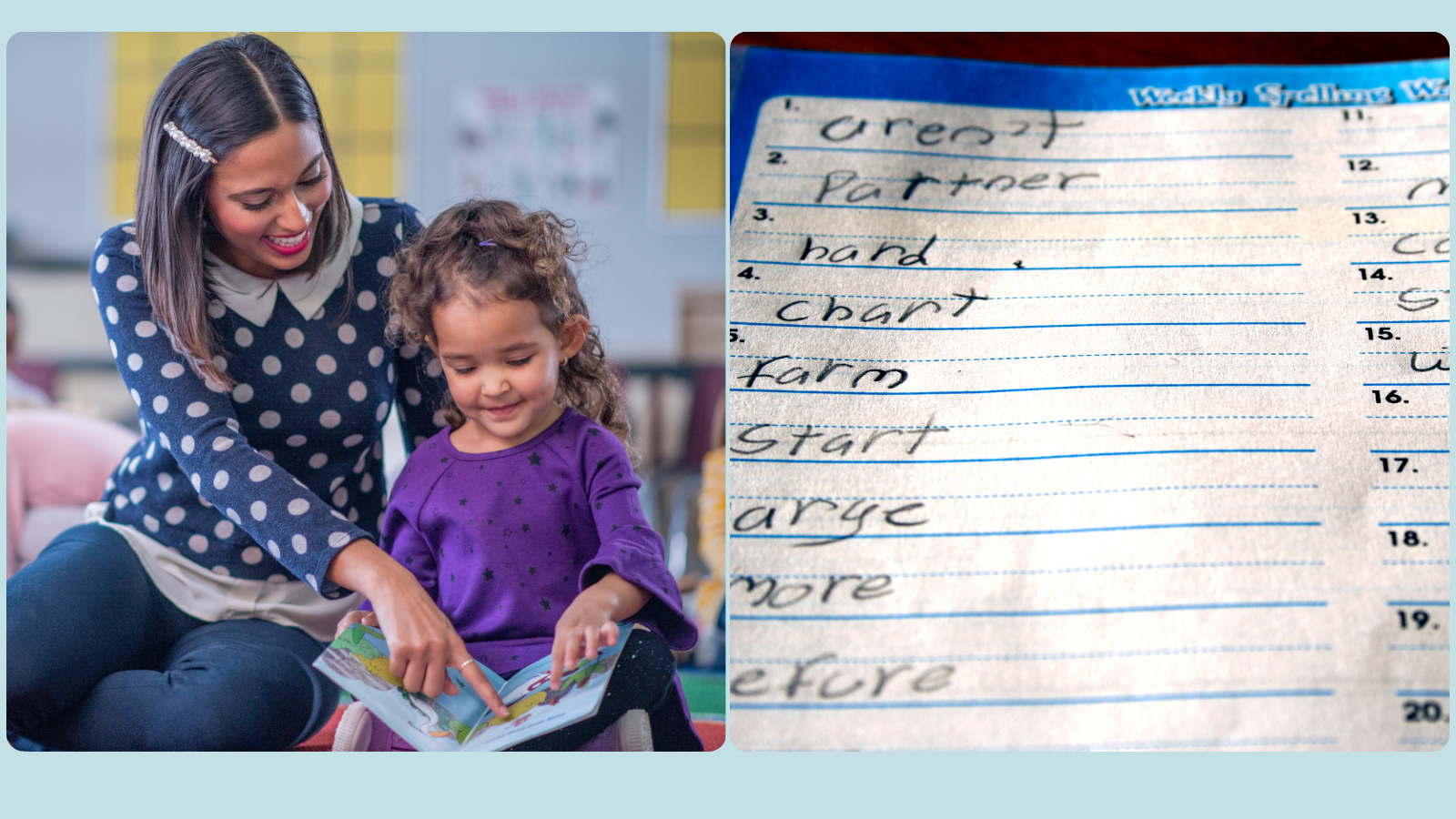Priorities for early reading instruction: revisiting the Narrow View of Reading
The Simple View of Reading says that reading comprehension = word recognition x language comprehension (e.g. Hoover & Gough, 1990). Together, fluent decoding and language skills explain more than 90% of the variance in students’ early reading comprehension development (e.g. Hjetland et al., 2018).
Some reading professionals conflate the components of the Simple View of Reading, and try to teach them together. But the skills are fundamentally different:
- Word recognition involves a well-defined scope of specific knowledge (e.g. letter-sound links, words) and processes (decoding) that can be taught systematically and tested quickly and objectively.
- Language comprehension is a complex of higher level mental processes that includes thinking, reasoning, imagining and interpreting; and includes understanding speech sounds, words, sentences, and discourse; referential and inferential comprehension, and background knowledge about specific subjects and the world.
In his Narrow View of Reading (2007), Kamhi suggested teachers and other reading professionals should:
- focus early reading instruction exclusively on word recognition tasks; and
- recognise that reading is just one way of acquiring knowledge and spend the rest of their class-time teaching students language skills and subject knowledge, e.g. history, maths, science, and arts (including literature), in ways that do not require students to be able to read the content (e.g. by reading quality texts to them, direct oral instruction, and listening tasks, and videos, etc).
The Narrow View appears to be consistent with the self-teaching hypothesis (Share, 1995); the neuronal recycling hypothesis (e.g. Dehaene & Cohen, 2007); research showing early decoding problems can become a bottleneck for the development of reading comprehension skills (e.g. Lervag et al., 2017); the theory that learning to read induces speech-print convergence (e.g. Chyl et al, 2018); and brain imaging studies showing that the brain changes itself as it learns to read (e.g. Yin et al., 2021).
The Narrow View is a useful mental model, encouraging reading professionals to:
- prioritise foundational decoding skills, including high frequency grapheme-phoneme links and blending in early reading instruction;
- assess word recognition early and often to find students at risk of dyslexia and other difficulties with word recognition; and
- dedicate more time (outside of early reading instruction) to support students’ oral language development, and to teach students domain-specific content knowledge about the world.

Main Sources: Kamhi, A.G. (2009). The Case for the Narrow View of Reading. Language, Speech, and Hearing in Schools, 40, 184-177. Catts, H.W. (2009). The Narrow View of Reading Promotes a Broad View of Comprehension. Language, Speech, and Hearing in Schools, 40, 178-183.

Hi there, I’m David Kinnane.
Principal Speech Pathologist, Banter Speech & Language
Our talented team of certified practising speech pathologists provide unhurried, personalised and evidence-based speech pathology care to children and adults in the Inner West of Sydney and beyond, both in our clinic and via telehealth.








